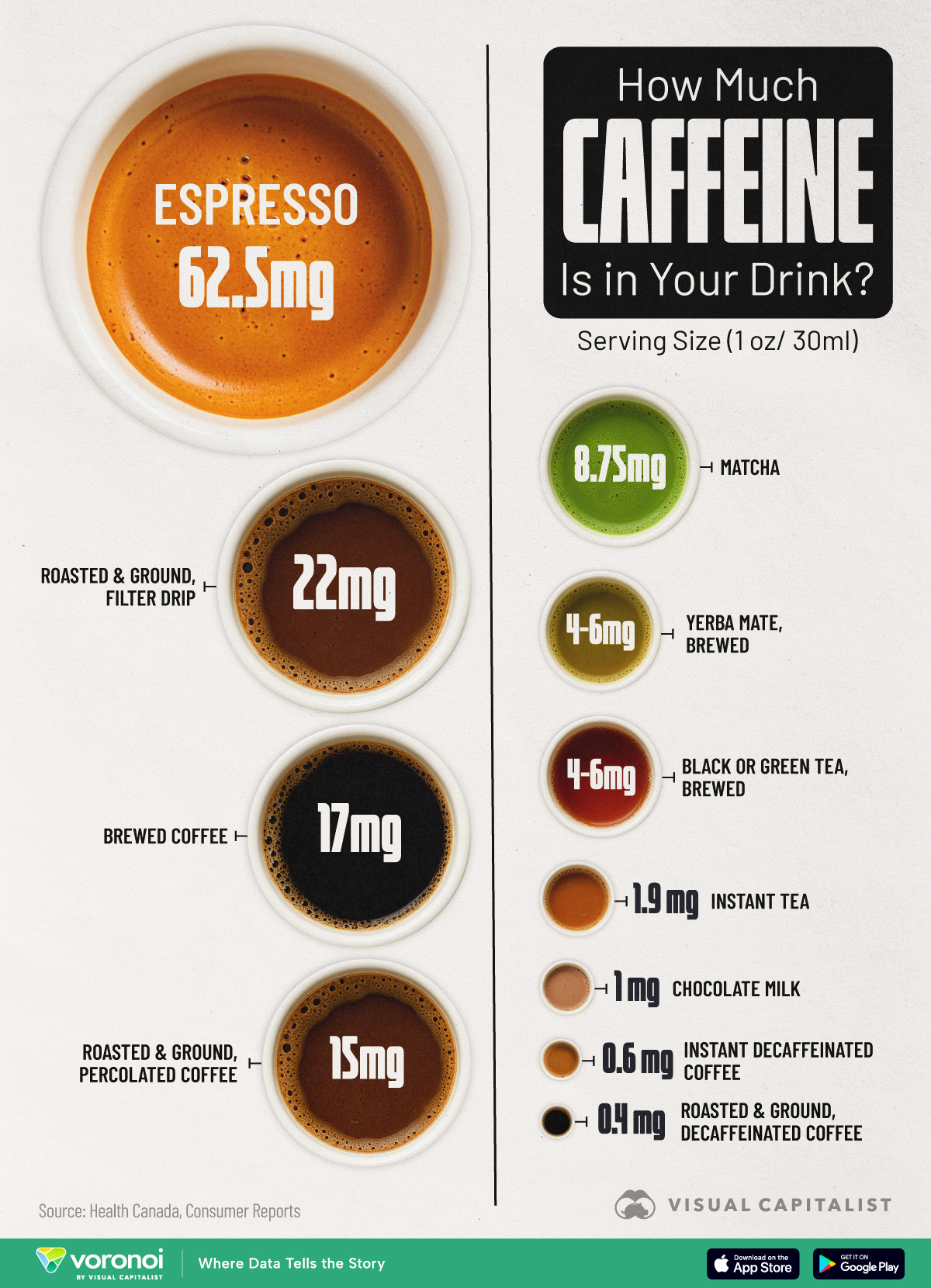![]()
See this visualization first on the Voronoi app.

Use This Visualization
How Much Caffeine is in Your Drink?
This was originally posted on our Voronoi app. Download the app for free on iOS or Android and discover incredible data-driven graphics from a variety of trusted sources.
Key Takeaways
-
- At 62.5 mg per ounce (30 ml), espresso delivers the most caffeine by far—nearly 4x more than brewed coffee.
- Matcha has 8.75 mg of caffeine per ounce, beating both black and green brewed tea at 4–6 mg.
Caffeine is the world’s most widely consumed psychoactive substance, found in everything from energy drinks to a classic morning espresso. But how do different drinks compare when it comes to caffeine content?
This graphic shows how much caffeine is present per ounce (30 ml) in a range of popular beverages, from coffee and tea to matcha and chocolate milk. The data comes from Health Canada and Consumer Reports.
Espresso Packs the Biggest Punch
At the top of the list is espresso, containing a concentrated 62.5 mg of caffeine per ounce. That’s over three times more caffeine than a typical brewed coffee, and over 60 times more than decaf.
Drip coffee and percolated varieties contain 22 mg and 15 mg respectively. Brewed yerba mate and tea are significantly milder, with 4–6 mg per ounce.
Matcha, despite its energetic reputation, contains 8.75 mg per ounce, putting it slightly above teas but far below coffee.
Chocolate milk and decaffeinated beverages land at the bottom of the list, offering less than 1 mg of caffeine per ounce.
| Product | Serving Size (30 ml) | Caffeine |
|---|---|---|
| Espresso | 1 oz | 62.5 mg |
| Roasted & ground, filter drip | 1 oz | 22 mg |
| Brewed coffee | 1 oz | 17 mg |
| Roasted & ground, percolated coffee | 1 oz | 15 mg |
| Matcha | 1 oz | 8.75 mg |
| Black or green tea, brewed | 1 oz | 4–6 mg |
| Brewed yerba mate | 1 oz | 4–6 mg |
| Instant tea | 1 oz | 1.9 mg |
| Chocolate milk | 1 oz | 1 mg |
| Instant decaffeinated coffee | 1 oz | 0.6 mg |
| Roasted & ground, decaffeinated coffee | 1 oz | 0.4 mg |
Understanding Your Buzz
It’s not just the total caffeine per drink that matters—it’s how fast you consume it, and in what concentration. A small espresso may energize you faster than a slow-sipped mug of tea or drip coffee.
Knowing what’s in your drink can help you better manage your energy levels throughout the day, whether you’re staying alert during meetings or avoiding a late-night caffeine crash.
Explore More on the Voronoi App ![]()
If you liked this graphic, check out Global Coffee Production in 2024, by Country.